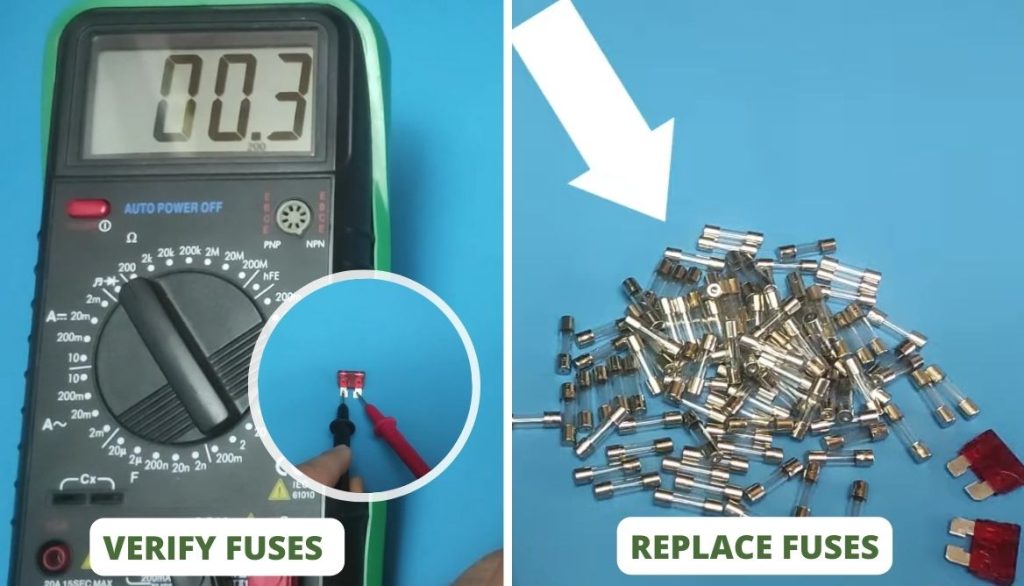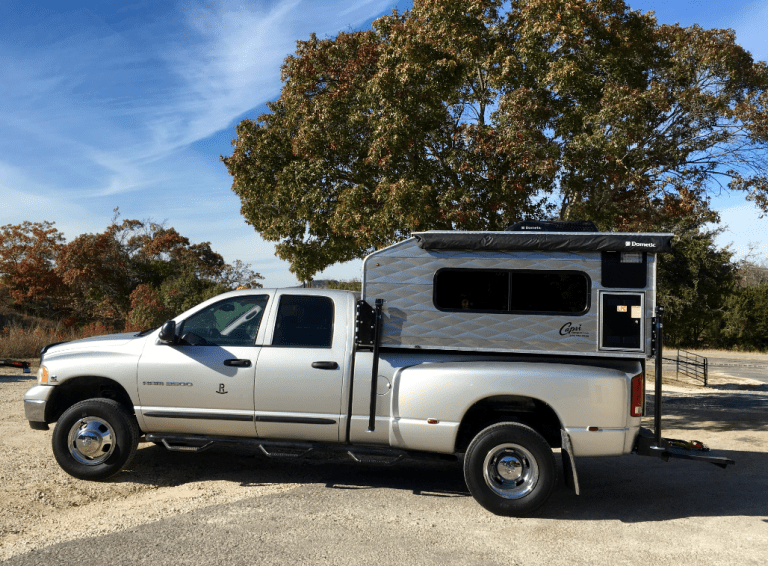RV Microwave Not Working: 14 Possible Reasons and Troubleshooting
Is your RV microwave not working? I am here to help if you are facing similar problems. My RV microwave was not working long ago, and I got so worried. Luckily, I discovered the cause and fixed it without any hardships.
In this article, I will highlight 14 possible reasons behind RV microwave not working correctly and possible solutions. Let’s not waste any time and jump straight into it!

Table of Contents
Overview of RV Microwave Not Working
Let us face it: a microwave plays a very important role in your RV. I remember when my RV microwave was not working correctly, I was so stressed. I could not cook, heat, or defrost my food conveniently.

From my experience, I learned how easy it is to troubleshoot my microwave not working. Sometimes the issue is not serious, and you can fix it yourself without calling a professional. Some of the reasons include:
- Problem with voltage fluctuations;
- The internal fuse of the microwave issue;
- Faulty wiring, poor sealing or connections, or the control board is not working.
Come with me as I go into details about why my RV microwave was not working and the troubleshooting steps I followed. Let us start, shall we?
What’s the Problem With My RV Microwave?
It can be frustrating when your RV microwave suddenly shuts down without warning. One moment, everything is working, and the next, you cannot defrost your food using your RV’s microwave.
But what could make your microwave malfunction? What should you do if your microwave shuts down? Should you buy a new microwave? I shall answer all these questions shortly. For now, let me take you through the possible reasons the RV microwave not working.
14 Reasons for RV Microwave Not Working and the Possible Solutions
identifying the reason behind your microwave malfunction is the first step. Once you have identified the issue, you can proceed to fix it. However, please note that there are instances where you might need to call a professional.
Here are some reasons for my RV microwave not working and the solutions I used to rectify the problem.
1. Problem With the External Power Supply or the shore Power
My RV microwave was not powering on at all. The screen was black, and the interior light wouldn’t light. Upon thorough investigations, I realized that my microwave had a problem with the outside power source, hence it was not getting sufficient power.
So what did I do? Below are some of the troubleshooting steps I followed.
The power supply is everything, and a microwave cannot function without it. Here is what you should do if there is not enough power supply from the outside power source:
- Ensure the shore power is emitting enough power. Unplug it from the power supply, then plug it back.
- Check the main power and the circuit breakers.
- Test the outlet using a multimeter to ensure the voltage is correct after you unplug the microwave.
- Flip the appropriate breaker off and back on on the breaker box.
- Try plugging into a different outlet to see if that particular outlet has a problem.
If the microwave works elsewhere, the problem is with the RV’s power source. Check out this video at on how to fix a microwave with no power and the interior light is not working.
2. You Have Not Connected to the Main Supply
Again, your microwave cannot work without being connected to a power source. Several other pieces of equipment that might not work are:
- Refrigerator;
- Air Conditioner;
- Toaster;
- Coffee maker.
Here is what you should do.
I remember this one time when I had not connected to the main supply, and here is what I did.
- Ensure the power source is generating enough power for the RV.
- Plug the equipment into the power source.
- Make sure the power source is on when you want to use the microwave.

3. Problem With GFCI Outlets
When there is an excessive difference between the current flowing into an electrical circuit and the current leaving it, a ground fault circuit interrupter (GFCI) outlet automatically cuts power. By preventing electrical wires from overheating and causing fire, the GFCI outlet significantly reduces the likelihood of shock injuries and deadly burns.
If the problem is with the GFCI outlets, you should:
- Unplug everything plugged into receptacles on the load side of the GFCI and see if it will reset. If it does not reset, press the reset button.
- Get a voltmeter and verify you have 120 volts getting to the GFCI outlet. If so, the problem could be on the output side. Try disconnecting the output load wire and verify that the outlet will work.
- Check for a loose wire at the breaker if there is no power to the outlet. Also, inspect for a loose neutral wire.
Note: It can be quite risky to poke around 120 volts; thus, I advise you to seek professional assistance.
4. Fluctuation With the Voltage
Microwaves can deactivate as a protective measure in response to fluctuations in voltage, owing to their heightened susceptibility to such variations. To effectively regulate and protect the power supply to your microwave, it is advisable to install a voltage stabilizer or surge protector specifically designed for RVs.
The lower the voltage, the slower the performance. In some instances, the microwave might not power on at all. Here is what you should do:
- The wall outlet voltage must match the specifications listed on the oven’s nameplate. You can find this on the rear or side of the control panel.
- Do not use a higher voltage as it is risky since it could cause the oven to catch fire or have some other accident that damages it.
- If your microwave isn’t working properly even after plugging it in, try removing and reinstalling the plug.
Let us look at the other possible problems and solutions.
5. Problem With the Venting
The correct ventilation of your recreational vehicle’s microwave is essential. There was once a problem with my RV’s microwave vent and it overheated a lot. When there is a buildup of too much heat, the microwave may often turn off. This includes heat from the burner underneath the microwave.
It will save you from many problems. You should:
- Make sure your microwave can vent correctly by checking the venting.
- Clean the air vents if they are clogged. You can use a cotton bud or a spatula to do this.
- Service the venting of your microwave regularly. This ensures that your microwave will function securely and that any issues will be easily detected.

6. The Internal Fuse of the RV Microwave Shuts
To prevent damage from sudden electrical surges, microwaves contain fuses. A blown fuse may cause the microwave to turn on, but it will not produce heat.
Learn how to replace the fuse of the RV microwave.
If you can’t find the handbook that came with your microwave, try searching online for a diagram that fits your specific model. You should be able to find the internal fuse using one of these. Proceed to troubleshoot.
- If you have a multimeter, check the fuse.
- If it doesn’t show continuity, then replace the device.
- Changing out the fuse in the microwave requires a fuse with the same rating as the one already there.
Note: Contact an expert if the fuse blows again after you’ve replaced it.
7. Flawed Sealing, Defective Wiring, or the Control Board Is Not Operating
From my experience, if anything is concerned with wiring, PLEASE leave it to the qualified electricians. Faulty wiring can pose a lot of danger to the RV users. You should therefore pay attention to the warning signs of faulty electrical wiring in your RV.
The microwave frequently ceases operation within a short duration due to a loose or defective seal on the door switch. In addition to mechanical issues, the malfunction may occur due to a short circuit in the voltage transformer or control panel.
Inspect the RV’s electrical system for dangling wires, worn cords, or faulty connections. Seek guidance from a qualified RV mechanic if you lack the confidence to handle this task independently.

8. RV Microwave Fails to Reheat Food
My microwave was powering on and the digital display was functioning well. However, it was not reheating my food. The display on the microwave can indicate that it functions occasionally. But it doesn’t guarantee the microwave is functioning.
In fact, it’s not uncommon for them to display numbers but be completely powerless. Upon investigating, I discovered there was a problem with:
- Main control board;
- Line fuse;
- Thermal fuse failure.
Here is what I did.
If you find yourself in a similar situation, you should:
- Use a multimeter to verify if the fuses have blown.
- Replace any blown fuses, and the microwave should function normally again!
- It’s also a good idea to check the exposed areas, such as the microwave’s connections, wiring, and any signs of wear and tear.

Note: If your microwave still turns on, but nothing happens when you put food in it, you should get a new one.
9. The Microwave Keeps Switching Off Session
High power output may cause your microwave to keep switching off during operation. Another reason that may cause your microwave to shut off when in operation is the microwave’s wattage may be too high.
To prevent your microwave from switching off while it is warming or defrosting your food, you should:
- Replace your microwave and get one that has the appropriate and sufficient wattage.
- Ensure your microwave is properly vented.
- Investigate if there are any issues with the outside power source.
10. A Problem With the Timer Settings or Control Panel
The other day my timer settings and control panel were not working. I had to call a specialist because I did not know what else to do.
Ensure that the buttons on the control panel are functioning correctly and are not experiencing any mechanical obstruction.

If the issue persists, there may be a problem with the internal control board, which requires the expertise of a specialist to remedy.
11. The Magnetron Malfunctions
I know what you are thinking: a transformer! But no, I am not talking about that. However, it is responsible for heat production in an RV microwave. Magnetrons in microwaves are extremely intricate devices. They do more than heat food by circulating hot air. Instead, they generate microwave radiation to heat meals using complicated chemistry.
At its core, magnetrons contain a cathode, a metal rod that has been heated. As the cathode in your microwave gets hotter when turned on, electrons start to shoot out of it and connect to various components of the magnetron. The subsequent processes generate heat in the form of microwave radiation.
It may sound a little technical, but it is not. A system this intricate can fail rapidly—even with a single glitch! If it happens, you should:
- Check the magnetron’s power supply with a multimeter.
- The magnetron must have a problem if it is scarcely using any.
- Please contact wit a professional.
12. Diode Failing
A high-voltage diode converts the alternating current from the transformer to direct current and then powers the magnetron. Improperly functioning diodes can hinder effective heating.
If the diode fails, PLEASE do not attempt to replace it! Replacing a faulty diode yourself could be risky. Therefore, you should get it done by a qualified specialist.
13. The Capacitor is Faulty
The capacitor stores the electrical power of the magnetron for later use. If the capacitor fails, the magnetron will not get any power at all, and it will not be able to generate heat.

Seeking a qualified technician to determine if the capacitor is the problem is a good idea because capacitors can keep an electrical charge even when the microwave is unplugged.
14. The Door Switch Has an Issue
You might think the microwave has other technical and serious problems, such as a faulty outlet, or even problems with the power pedestal, while the problem is the door switch.
If the door switch of the RV microwave convection oven is malfunctioning, the appliance may continue to function but fail to generate heat.

Arrange for a skilled technician to examine and replace the door switches if needed.
How to Replace Your RV Microwave?
For the sake of your camper van and your comfort, there are several things you should know and think about before purchasing a new RV microwave. Such include:
- Measurements: When shopping for a new microwave, it’s a good idea to collect measurements of the existing one and consider how much room it takes up in the cabinets. You do not want to buy a new RV microwave to find out it won’t fit; this will be a waste of money.
- Power: It’s important to remember your previous model’s power requirements. By doing so, you can circumvent the issue of insufficient power for the new device.
Important! Being ready will ensure you don’t have any issues if the microwave you’re interested in uses more electricity. Employ a generator powerful enough to run your microwave, or make sure the connections you use from now on have plenty of amperage.
Installation Process
The installation of a new microwave is easy after you’ve made your selection and paid for it. Having a professional install your microwave is always an option. Still, if you want to save money, you can easily do it by following the instructions that come with your appliance.
Please watch this step-by-step video of how to replace an RV microwave and install a new microwave.
Tip: In any case, remember to hold on to any screws that may have fallen out of your previous microwave. If your cabinetry has any unique mountings, these can be useful for attaching the new one.
Frequently Asked Questions
What to Do if Microwave Is Not Responding?
When the microwave is not responding, the first thing to do is to confirm if the device is plugged in. If the problem is not with the power cord, consider checking if the circuit breaker has tripped in the breaker box. If that is the case, reset the breaker or replace the fuse.
Where Is the Fuse on the Furrion RV Microwave?
The fuse on the Furrion RV microwave is situated at the upper right-hand corner of the back of the unit. If you want to access the fuse, you must remove the unit.
Why Would a Microwave Not Work?
A microwave would not work if the magnetron in your microwave is malfunctioning. Changing out a burned-out magnetron is the only option when all other options have been exhausted. A malfunctioning door switch or a broken diode are two more potential causes of your microwave not working.
Conclusion
That is all my information on the causes and solutions of your RV microwave not working. The RV microwave is so advantageous when you are on the road, and if it develops a problem, it can cause a lot of inconvenience. If your microwave suddenly stops working, it must be because of the reasons I have discussed above.
Let me refresh your memory. Some causes of the RV microwave not working include an overheating issue, a problem with the shore power, an issue in the breaker box, a shot in the fuses, and insufficient power reaching the microwave.
The solutions I used to rectify the problems included replacing the fuses, checking the breaker box and ensuring everything was in order, repairing the faulty and loose wires, and ensuring no problems with the GFCI outlets. Remember to contact an electrician in case of any issues.
So, what issues do you have with your RV microwave? Talk to me and let me know the issues you have experienced with your microwave.

I`m a current Law Enforcement Officer working within the Counterterrorism Bureau in New York State. I have been Camping for over 20 years. My styles of camping include tent, car, truck, van, and RV travel trailer. I have a YouTube channel where I teach all types of camping with an entertaining method: https://youtube.com/@TheSmallsRVAdventures





